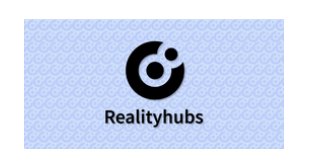Reducing cost basis with put options

This is a review of a common method amongst option traders of reducing their cost basis of a stock they wish to own long term, it called selling cash backed puts.
To start this review we should provide a few definitions:
Option
An option is a contract between two parties in which the stock option buyer (holder) purchases the right (but not the obligation) to buy/sell 100 shares of an underlying stock at a predetermined price from/to the option seller (writer) within a fixed period of time.
Strike Price
The strike price is the price at which the underlying asset is to be bought or sold when the option is exercised. It's relation to the market value of the underlying asset affects the moneyness of the option and is a major determinant of the option's premium.
Premium
In exchange for the rights conferred by the option, the option buyer have to pay the option seller a premium for carrying on the risk that comes with the obligation. The option premium depends on the strike price, volatility of the underlying, as well as the time remaining to expiration.
Expiration Date
Option contracts are wasting assets and all options expire after a period of time. Once the stock option expires, the right to exercise no longer exists and the stock option becomes worthless. The expiration month is specified for each option contract. The specific date on which expiration occurs depends on the type of option. For instance, stock options listed in the United States expire on the third Friday of the expiration month.
Review continued
Now that you have read these definitions we can proceed with our strategy, but first let’s explain our strategy in terms of these for definitions to make sure you understand what I am about to tell you. Some will be repetition, but repetition is the mother of learning.
Here goes:
So in regard to cash backed or cash backed puts. Selling a put option, means you grant someone the right, but not the obligation to sell you 100 shares of a stock, at a certain price called the strike price, before a certain date, called the expiration date, for a fee called a premium. You can use this strategy to reduce your basis on stock you wish to own.
Example:
You want to own Apple stock.
It’s current market price is $100.00
You want to own it, but only at $90.00
You could enter a limit order to buy 100 shares at $90.00 and wait. But you would wait potentially a long time. But there is a way to buy at $90.00 and get paid for it. Sell a put option with a strike price of $90,00 and collect the premium.
So you sell one contract of puts on Apple with a strike price of $90.00 for a premium of $3.00 per share times 100 shares and get paid $300.00. Now the cash you need, to buy 100 shares of Apple at $90.00 has to be in your account $9000.00 and is tied up in your account for 30 days or until your options expire or you buy them back. But that’s okay because you were planning to buy Apple at $90.00 anyway.
If your lucky Apple has an earnings announcement, investors get scared and there’s a sell off which drops the price of Apple to $89.00 and the holder of your put option demands you buy his Apple stock for $90 which is now above the market price of $89. You are overjoyed because now you get to own Apple stock at $90.00 per share and you got paid $3.00 per share to buy it. So your basis is further reduced to $87.00 per share due to the premium you collected.
Let’s look at the Math
Apple market price is $100.00
You sell one contract of put options, with a strike price of $90.00, for a premium of $3.00 and an expiration in 30 days.
Apple stock price falls to $89.00 before 30 days has passed.
The holder of your put option exercise or asks you to honor your agreement.
You pay $90.00 per share for his Apple stock so your basis is $90.00,
But you were paid a premium equal to $3.00 per share when you sold the put contract.
So this $3.00 per contract further reduces your basis $3.00 per share, so your real basis is now $87.00.
Using the sale of cash backed puts you have not only purchased Apple at $90.00 but using the premium you actually paid $87.00.
In a few months Apple has gone back up to $100.00 and you have 100 shares of a $100 stock which cost you $87.00.
Conclusion
Selling cash based puts is a good way of owning a cyclical stock, one which goes up and down in s range at a low price and allows you to reduce your basis two different ways using the strike price and the premium.
I have used this method and it works well because even if the stock moves higher on news instead of lower, you still get to keep the premium and sell the puts again the next month. Then wait for a dip to your strike price.
If your patient and choose your strike price wisely using the statistical movement range of the stock as your guide you should make money on the premium and get to buy the stock at a discount. There is a chance that Spple will moon and you will have missed the chance to buy at $100 and it goes to $110,00 or $130.00,
But the statistical probabilities show that event or that price is possible, but not probable.
Let me know in the comments if you have used this strategy and how it worked for you. Let me know also if you have questions.
✍️ By Shortsegments.





RealityHubs is a review platform where users can post on this site their perspectives on things people use in everyday life, thus Reality Hubs. This is very broad category, thus it is attracting a lot of users.
You can read about it in this post RealityHubs! .
👏👏👏
Upvote
Resteem
Thank you
To listen to the audio version of this article click on the play image.

Brought to you by @tts. If you find it useful please consider upvoting this reply.
Good
Posted using Partiko iOS